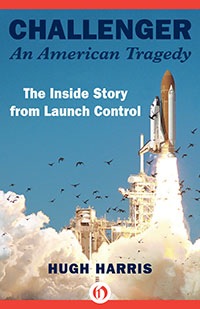Review: Challenger: An American Tragedyby Jeff Foust
|
| A limited flow of information “created a contentious relationship between the media and NASA” in the days following the accident, Harris writes. |
Time, though, offers new insights and new perspectives. In Challenger: An American Tragedy, Hugh Harris provides an insider’s account into the accident and investigation from his perspective at the Kennedy Space Center. For many years, Harris was the “voice of NASA,” providing the pre-launch commentary for dozens of Space Shuttle missions. That included Challenger, as he narrated the countdown through liftoff; after the orbiter cleared the tower, Mission Control in Houston took over.
“We had plans for practically everything,” Harris recalled in a telephone interview last week. The public affairs office had contingency plans in the event of an accident, but that “unfortunately had some loopholes in it.” That plan, he said, was not followed in some places, or changed by senior management. “The plan called for someone in authority to come to the Press Site in an hour after an accident and talk to the press,” he said. “That did happen for five hours” after Challenger was lost, because people were unavailable and because senior management decided there was nothing to say, he recalled. “That’s probably the worst thing you could do, because it’s much better to say ‘I don’t know and here’s what we’re doing to find out’ than it is to say nothing it all.”
Challenger: An American Tragedy is a mix of a brief history of the accident and the investigation with Harris’s own experiences as part of the public affairs staff at the Kennedy Space Center. The former will be very familiar to most readers, as Harris provides the basic details into the investigation. What’s far more interesting, though, is Harris’s recollections, which primarily covered dealing with the media, including the reporters unfamiliar with the space program who swarmed to KSC after the accident. A limited flow of information “created a contentious relationship between the media and NASA” in the days following the accident, he writes.
However, Harris overall has good memories of dealing with the media. In the book, he favorably recalls the efforts of two veteran space reporters—still on the space beat today—for getting scoops during the investigation. NBC’s Jay Barbree leveraged his network of sources to discover, a few days after the accident, that the failure of an o-ring in one of the solid rocket boosters was the cause of the accident. (Barbree, Harris recalled, talked to him about the discovery beforehand, and Harris promised not to “ruin your scoop.”) Bill Harwood, then of UPI, got his by dint of hard work: Harris recalls he was the only reporter working at the Press Site on a Sunday when Harris was writing the press release about the discovery of Challenger’s crew cabin, and thus got his story out first.
| “Most of the books about Challenger are about what actually happened to cause the accident. This book is about people as much as it is about nuts and bolts.” |
“I think we had a great rapport with the media for most of the time that I worked for NASA,” Harris, who worked for NASA for 35 years, said in last week’s interview. “The news media by and large trusted us, except for usually the newer members of the media, who thought to themselves, ‘If only we can find something wrong, we can make a name for ourselves.’” The lack of information in the immediate aftermath of the accident damaged that relationship, he said, which took some time to repair.
So why now, more than 25 years after the accident, did Harris write this book? Part of the answer is straightforward: he was contacted by the publisher about writing the book, he said last week. More fundamentally, though, Harris wanted to offer a different perspective on Challenger. “The most important thing that the book does is that it talks about people,” he said. “Most of the books about Challenger are about what actually happened to cause the accident. This book is about people as much as it is about nuts and bolts.”
This relatively short ebook does succeed in that respect, offering an insider’s perspective to the accident and investigation, one heavily oriented towards the public affairs elements of that. After all these years, there’s still more to be said about one of the most tragic days in NASA’s history.
